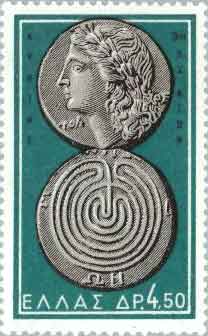Why oh why do you want to use a maze for a labyrinth?
Because there's a maze maker online?
Good point about having only one entrance, though I'm not completely sold on only one path.
Why oh why do you want to use a maze for a labyrinth?
Because there's a maze maker online?
Good point about having only one entrance, though I'm not completely sold on only one path.
That's what a labyrinth is though.
But it's not what the labyrinth built by Daedalus to hold the minotaur was. (You don't need Ariadne's skein to find your way back out if the path is unicursal.)
It's unclear when scholars first started attempting to treat labyrinths and mazes as being two different things; but the origin is certainly not classical. Nor is it colloquial. (And, notably, the OED still doesn't recognize it.)




And of course there's always the ever fun option of having the maze rearrange itsself periodically.
Sure about that one?
Yes.
I fully encourage you to actually do some meaningful research into (a) the history of the term labyrinth; (b) it's earliest known usages; and (c) the actual story of Daedalus' labyrinth (and its variants). But I'm just not interested in doing your homework for you.
